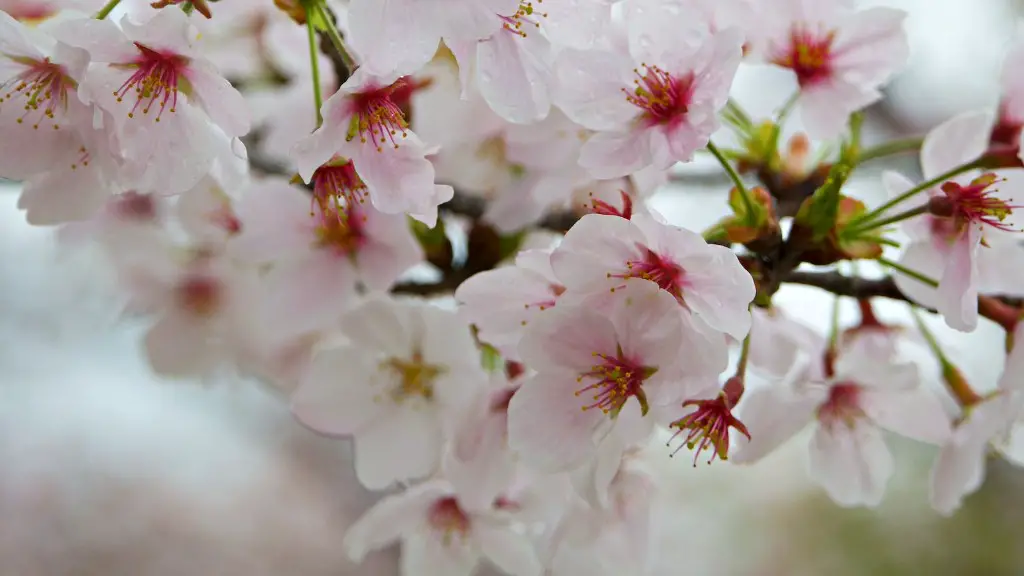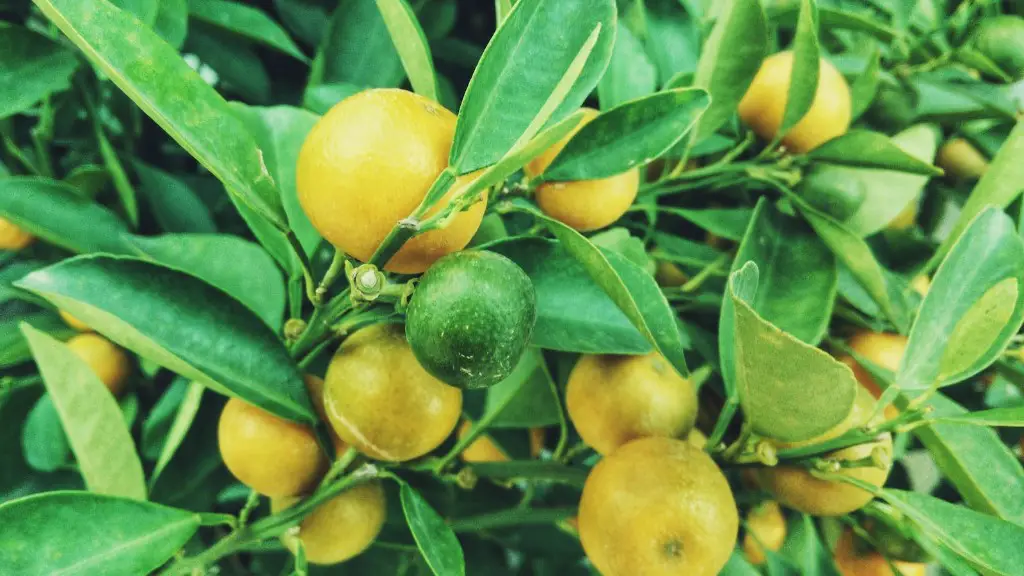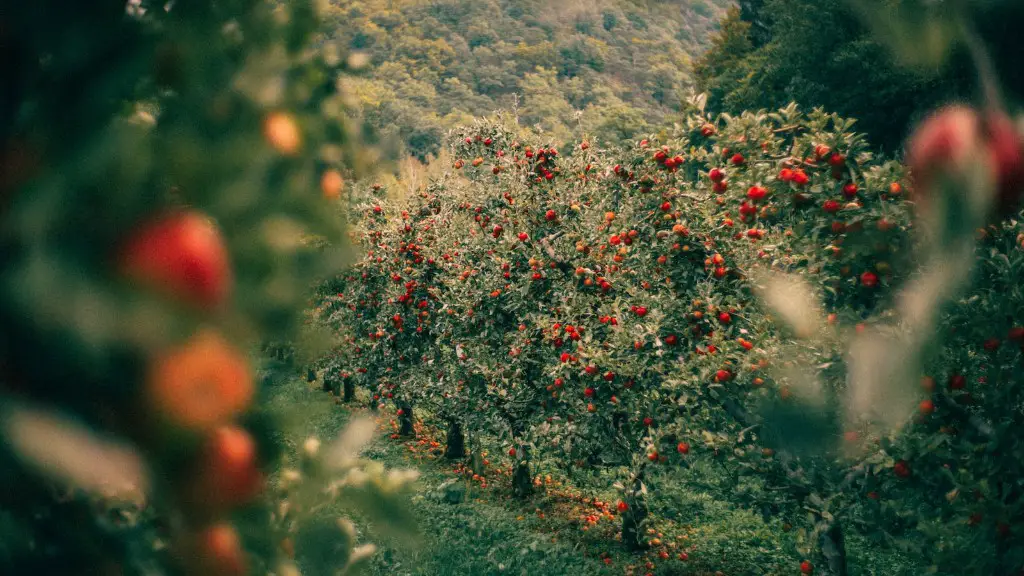Gardening in clay soil presents a challenge but planting a cherry tree can be achieved with the right combination of preparation, soil and potential maintenance. The key to success lies in understanding the nature of clay soil, the specific requirements of cherry trees, and the steps necessary to set up the tree for success.
Clay soil is composed of tiny particles that form a dense, often tight material. This limits the availability of oxygen, water, and other nutrients that plants need to thrive. As a result, it can be difficult to establish anything in clay soil without prepping the soil and setting up the area for the tree.
Fortunately, cherry trees are among the hardiest of fruit trees. Most cherry trees are grafted from cherry root stock onto the desired cherry variety, and this makes them somewhat more resilient in less-than-ideal circumstances. However, understanding the needs of a cherry tree before planting is essential for a successful harvest and a healthy tree.
Cherry trees need plenty of sunshine and should be planted in a location in full sun for optimal growth. They are vigorous growers and become top-heavy, so they require sturdy support to hold the branches up and prevent damage. The tree’s root system should also be provided with plenty of space so it can establish itself.
By far the most important part of planting a cherry tree in clay soil is the soil preparation. To ensure the tree will fare well in clay soil, breaking it up is essential to improve its texture and make more room for the roots to expand. Clay can be amended with compost, ground bark and sand to increase drainage and provide nutrients.
Once the soil is prepared, planting the cherry tree is much like planting any other type of fruit tree. Dig a hole at least twice the size of the tree’s root ball and loosen the soil at the bottom of the hole. Carefully remove the tree from the container and place it in the hole. Once the tree is in position, pull soil around the roots, pat down firmly and water the tree thoroughly.
In addition to soil preparation, cherry trees should be pruned each year to maintain their shape and promote healthy growth. Regular fertilization is also a must. To promote good drainage and reduce compaction, adding a layer of mulch around the root zone is advised.
Compact Clay Soil
Compact clay soil is often dense, which means it won’t let in necessary water and nutrients. To make an effective planting bed in compact clay soil, the soil must be broken up to the depth of at least 18 inches. Adding organic matter such as compost and peat moss helps aerate the soil and create sufficient space for the roots to expand.
Aside from turning up the soil, it’s also important to pay attention to the angle of the tree’s planting. Aiming to reduce the angle of the root ball may help prevent the tree from getting top heavy and heavily weighed down on one side.
Finally, watering is imperative for trees planted in clay soil. Clay takes longer to absorb water, but it stays wet for a longer period of time. To ensure the water reaches the roots, let the water run for several minutes.
Protecting the Cherry Tree
To maximize the potential for a successful cherry tree, setting up simple protection pieces may help. A tree guard of plastic or chicken wire can be a great idea, as it should help keep animals at bay and protect the trunk from sunburn.
It’s also important to note that the area beneath a cherry tree should be kept clear of debris. Accumulated leaves, twigs, and other debris can hinder oxygen circulation, preventing the roots from getting enough oxygen. Thus, it’s important to rake around the tree regularly and keep the area clear of clutter.
Finally, when it comes to pruning and trimming, it’s best to wait until the tree is three or four years old. More serious pruning may take place when the tree is five to eight years old. Keeping the tree’s shape in check helps the cherry tree bear more fruit, as well as prevent disease.
Winter Care
To get a good harvest from a cherry tree, careful steps should be taken to protect it from winter winds and cold temperatures. One way to do this is by wrapping tree trunks with special tree wraps, which will help insulate and protect them from frost.
Mulching the area around the cherries is also critical. This can help maintain soil temperature, reduce water evaporation, and prevent weeds from invading. The right kind of mulch will also provide nutrients that the tree needs to thrive.
Finally, watering regularly throughout the summer is one of the best ways to ensure a successful harvest in the Cherry Tree. Cherry trees are very sensitive to drought and need regular water, especially in the early stages of development.
Fungal Diseases
Besides winter care, it’s also important to be aware of the risks of fungal diseases. Fungal disease is a common issue among cherry trees, especially in moist and humid conditions. Keeping surfaces dry and removing fallen leaves in the fall and pruning branches that touch the soil can help reduce the risk of fungal diseases.
It’s also important to check on the trees regularly, as they may succumb to various fungal diseases that can cause branches to become weak and die. To ensure a healthy tree, it’s best to use an anti-fungal spray each spring and fall.
Heavy fertilization in the late summer and early fall is also important, as too much nitrogen during this period can lead to fungal invasion. Finally, testing soil for nutrient deficiencies can help diagnose and prevent any problems that may arise.
Constant Care
Of course, all of these steps should be combined with good care and frequent monitoring to ensure a successful harvest. Cherry trees should be monitored throughout the year for pests, disease and other potential problems, and any problems should be addressed quickly.
Constant pruning and fertilizing are also essential. The goal should be to train and shape the tree, so it can support a large, healthy harvest over its full life cycle. Proper thinning of the foliage in the spring and summer will also ensure that the tree has enough energy to produce a good amount of high-quality fruit.
By following these steps, many gardeners can find success in planting a cherry tree in clay soil. It’s important to understand the soil, the tree’s specific needs and take the right steps to ensure success. With the right preparation and knowledge, gardeners should be able to successfully plant a cherry tree in clay soil and enjoy its many rewards.




